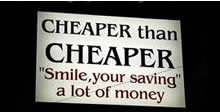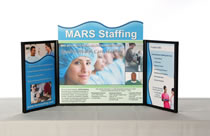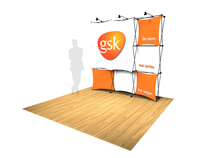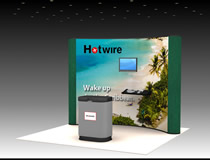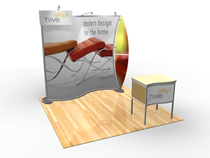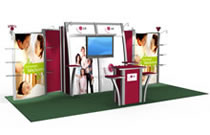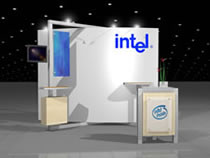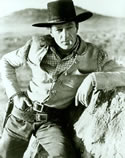
Shooting from the Hip by Reid Sherwood
Well, after last week’s sales calls, I decided that all anybody wants to talk about is price. The price of EVERYTHING. Not just trade show exhibits, but everyone is looking for a deal. Looking for a deal is easy, because there is always someone or something cheaper. That doesn’t necessarily mean that it is equal. Just cheaper.
I had a handful of appointments where the conversations went something like this, “Hey, we just had you guys quote a project, and you were 8 percent less than Brand Z so you are getting the job.” Or maybe like this, “I had you quote three different designs, and you were less expensive on two and more on one.” Then you hear, “I love your new Sacagawea designs because they are so well made AND affordable.” That gives you a little hope that design matters and so does quality. That statement is followed up with, “All your stuff is too expensive.” So, if you are doing market research (and I am not), you come away with your head spinning.
What Really Matters to People Anymore?
Do you ever buy on quality? Has the Wal-Mart mentality totally consumed us? When I see a retractable banner stand for $99, including the graphic, I wonder how long before it breaks, and you have to replace it. If a distributor is selling it, how can you afford to service something that was only a hundred bucks to begin with?
We did a little exercise when I worked at Optima Graphics that went something like this. Name 10 things that you buy on price alone. Well it was obvious after a few minutes that price is rarely the only factor. Gas, bread and milk became the three “locks” where price was the driving force. But even as you stop to rationalize, you find that you aren’t going to buy your milk for 2.49 a gallon at convenience store A, and then your fuel at convenience store B, even though the gas is 2 cents a gallon cheaper at B. Convenience and your time plays a factor in buying.
Sometimes buying is easier at one place even if you are paying a little more than making the more difficult purchase at cheapoworld.com. So, are you going to follow that path of least resistance or are you going to put forth some effort to save money?
Just for conversation’s sake, here are some things that I spend more on than what some would call reasonable:
- Car Repair – Not labor, but on any parts. I usually spend the longer dollar since typically you get a much better warranty.
- Hunting Equipment – One of my hobbies. I use the equipment hard, expect it to last, therefore I pay more and get more.
- Shoes – Hey, they are my feet. I want them happy.
- Clothes – Because of all the travel I do, I expect them to hold up and last.
Here are some things I WON’T spend extra on and try to buy the cheapest available:
- Reading Glasses – I lose them. Often. So I try to buy them at a dollar store and buy 10 pairs.
- Phone and Computer Charging Cords – I either lose them or they break. I think they are made to fail. It has been quite a while since I bought any since every rental car center and every hotel has a box of charging cords you can sift through and find your style.
- Bottled Water – I would buy FIJI, which is expensive, but it is in a square bottle and doesn’t fit in a single drink holder I have ever seen. So I buy whatever is cheap and round.
That is enough to get the conversation rolling I hope. Hope you all have projects closing. That makes everyone happy.
Till the next time,
Reid Sherwood
reid@classicmodul.com




